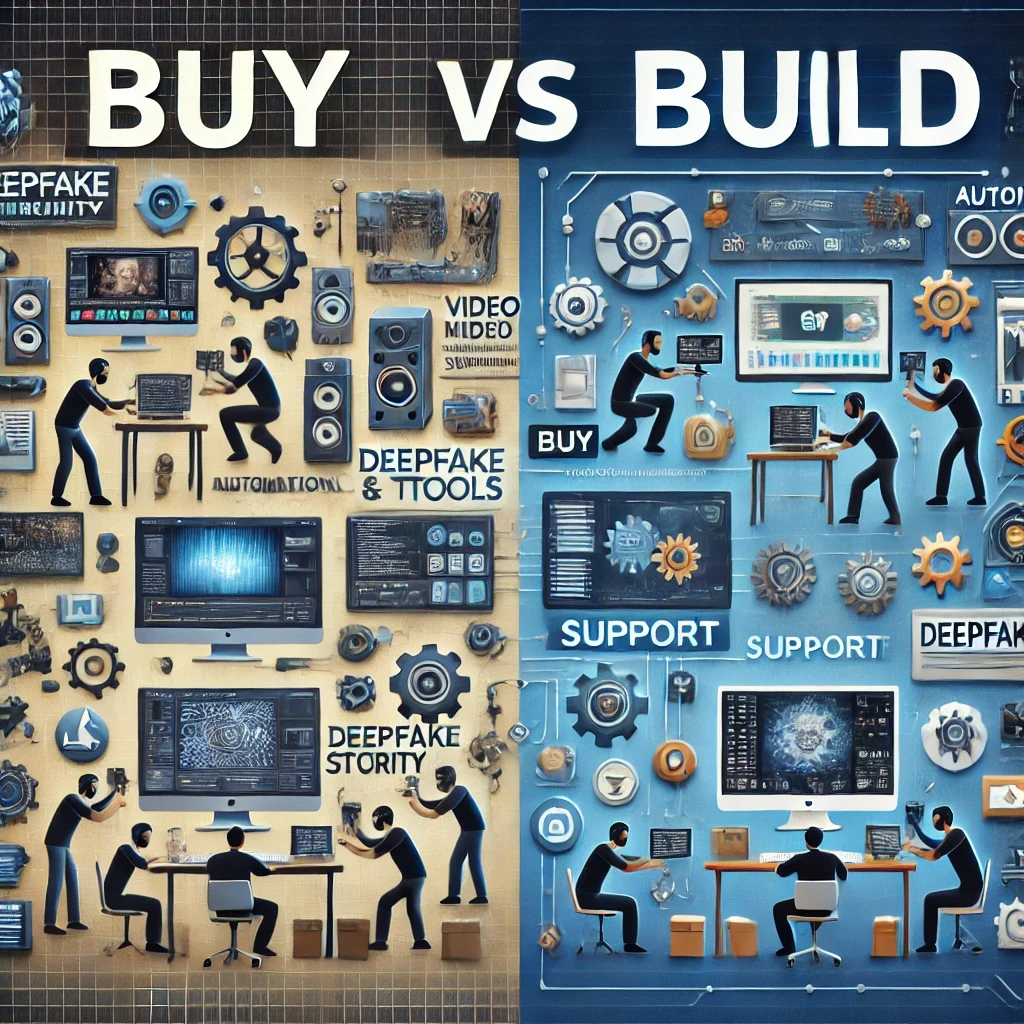Buy vs Build
Buy vs. Build: Should You Tackle Deepfake Simulations In-House?
Published on:
Wednesday, October 30, 2024
Deepfake.sucks
Buy vs. Build: Should You Tackle Deepfake Simulations In-House?
Deepfakes suck, and they’re only getting better at fooling even the most vigilant among us. With cybercriminals now armed with the power to create ultra-realistic fake videos, audio, and text, organizations face a new and sophisticated threat. But here’s the question: when it comes to testing testing your defences and training your team against deepfakes, should you build a simulation program in-house, or is it smarter to outsource this to experts?
Let’s dive into the “Buy vs. Build” debate and see why creating deepfake simulations in-house might not be as simple—or as effective—as you think.
Why Deepfake Simulations Are a Whole New Ballgame
You’ve probably already got a phishing simulation program in place, right? Great! But deepfake simulations aren’t just phishing on steroids. They’re an entirely different beast. A basic phishing test involves a few emails and maybe a fake landing page. But deepfake simulations? They require orchestrating realistic scenarios across multiple media and channels: video, audio, text, email, phone calls, WhatsApp, Zoom—the works.
Imagine this: to truly test your organization’s readiness against a deepfake, you need to simulate a believable scenario. That might involve creating fake video calls from a "CEO," calls from “HR,” and WhatsApp messages from “finance,” all in sync and scripted to sound as real as possible. Creating deepfakes isn’t just about one medium; it’s about seamlessly combining multiple elements into a scenario that feels real enough to trick even the savviest employee. And doing that in-house? It’s a whole lot harder than it sounds.
Building In-House: The Cost of Complexity
Sure, your security team is top-notch. But are they also video producers, sound editors, and behavioral psychologists? Building a deepfake simulation in-house means stretching your team across new skills, technologies, and, frankly, a lot of tedious work. From creating believable deepfakes to orchestrating multi-channel scenarios, here’s what an in-house project typically involves:
Creating Plausible Deepfakes – You’ll need AI tools, talent, and time to create realistic audio and video that look and sound like your leaders.
Designing Multi-Channel Scenarios – Deepfake attacks don’t happen in a vacuum. They come through emails, phone calls, WhatsApp, and even Zoom. Pulling these elements together is like producing a short film for each attack simulation.
Building Automation & Reporting – It’s not just about fooling employees; it’s about gathering data. Effective deepfake simulations need detailed reporting to measure awareness and response, which means more time on custom-built automation and dashboards.
The time, money, and energy required to bring all these pieces together are significant. Not to mention, your team’s already busy dealing with the day-to-day challenges of cybersecurity.
Why Buying Is Better
Let’s face it: fighting deepfakes takes specialist skills, advanced tools, and time your security team doesn’t have. By outsourcing to a specialized deepfake simulation provider, you’re getting more than just a pre-packaged training tool—you’re getting expertise.
Realism and Believability – Professional deepfake simulations come with high-quality, believable scenarios. From video and audio deepfakes to multi-channel attack vectors, providers have the skills to create simulations that feel real enough to trick even your most skeptical employees.
Comprehensive Campaigns – A good deepfake simulation doesn’t just look realistic; it also simulates how an actual attack would unfold. That means creating and coordinating scenarios across email, phone, and messaging platforms with the finesse that only specialists can deliver.
Data-Driven Insights – By partnering with an experienced provider, you get more than just a simulation; you get insights. Reporting features offer an in-depth look at how your team responds to threats, allowing you to identify vulnerabilities and improve training in a targeted way.
Time and Resource Savings – Building a deepfake simulation program from scratch is time-consuming, resource-intensive, and requires expertise that most organizations don’t have. By buying a solution, your team can focus on what they do best while still benefiting from an advanced, realistic defense against deepfakes.
So, Should You Build or Buy?
If you want to protect your organization against deepfakes, building an in-house program might sound tempting. But consider this: deepfake simulations require a blend of technical know-how, creativity, and logistical coordination that even the most skilled security teams will struggle to achieve. By outsourcing, you get a professional, well-orchestrated simulation program without the headache of developing it yourself.
Ready to see how deepfake simulations can strengthen your security posture? Let’s talk.
Stay Updated with the Latest in Deepfake Defense!
Get the best of deepfake news, insights, and security tips delivered straight to your inbox.



